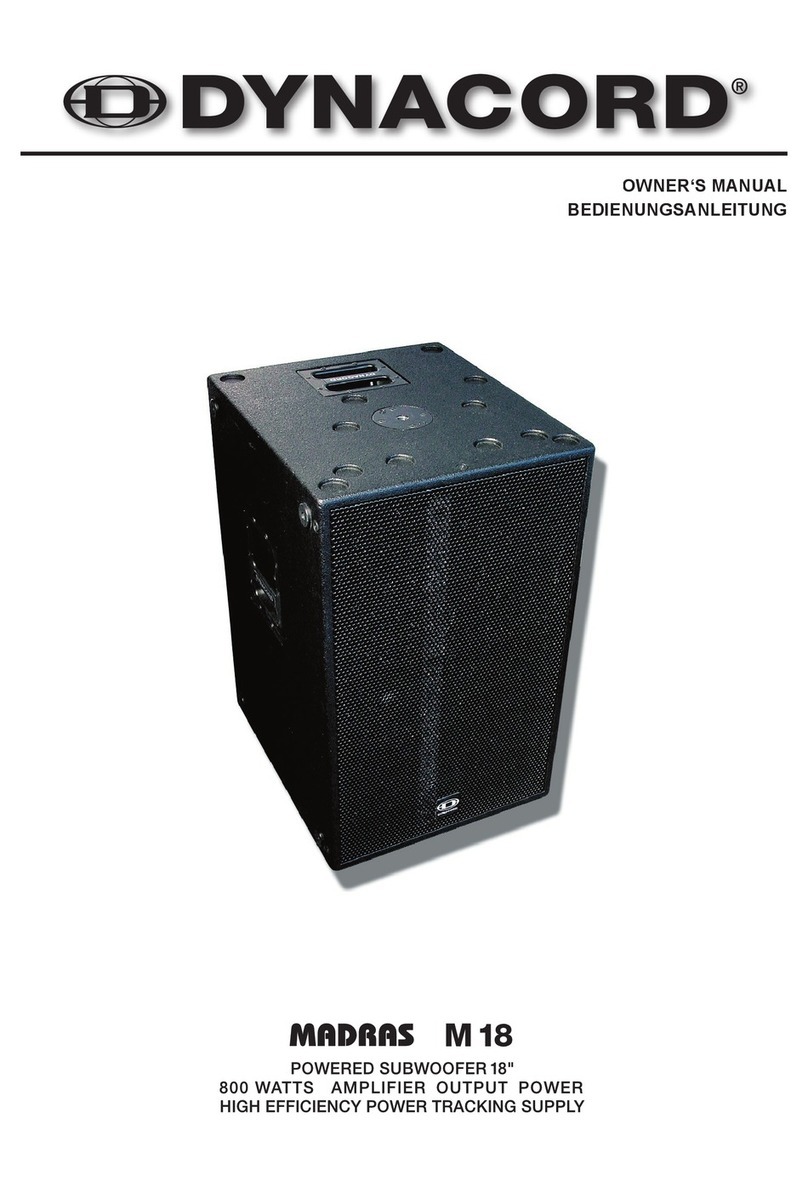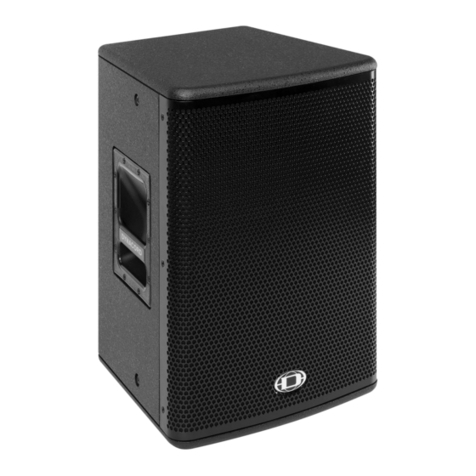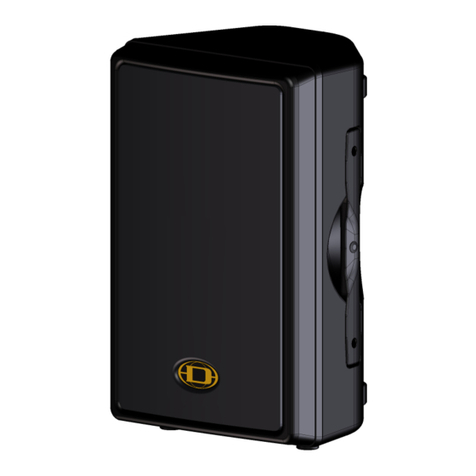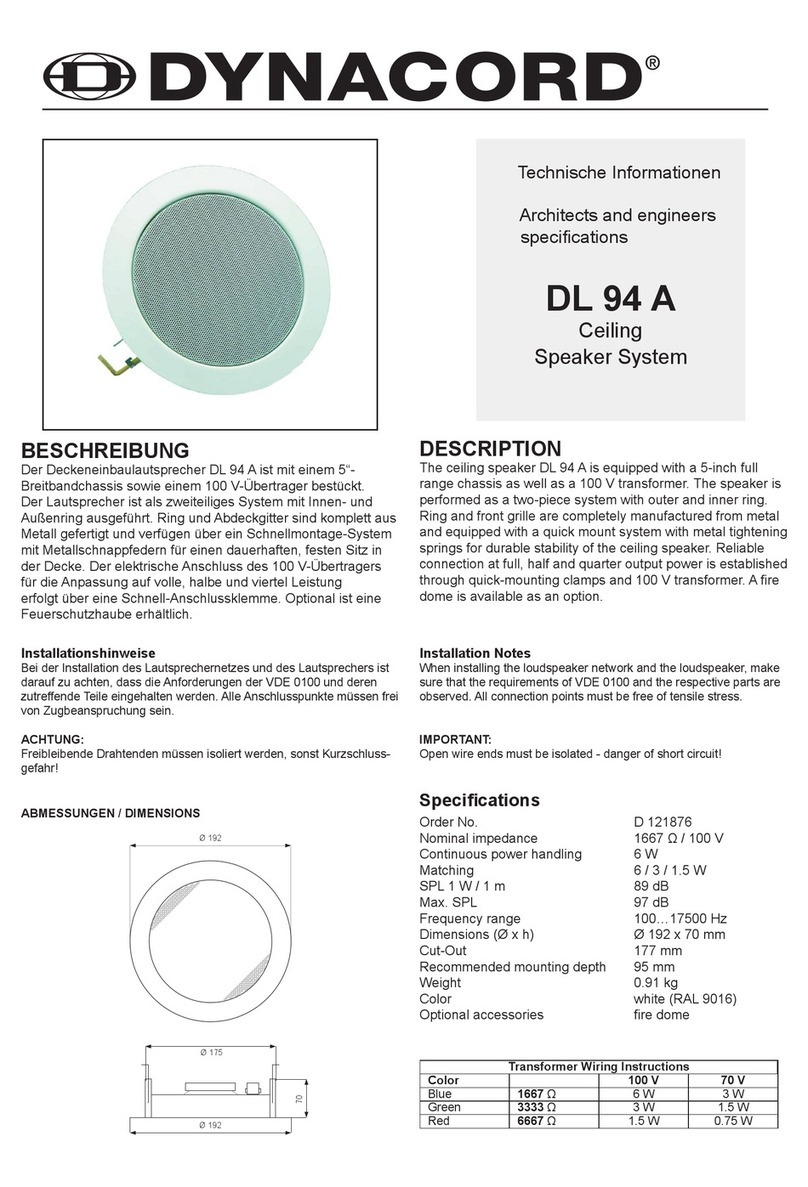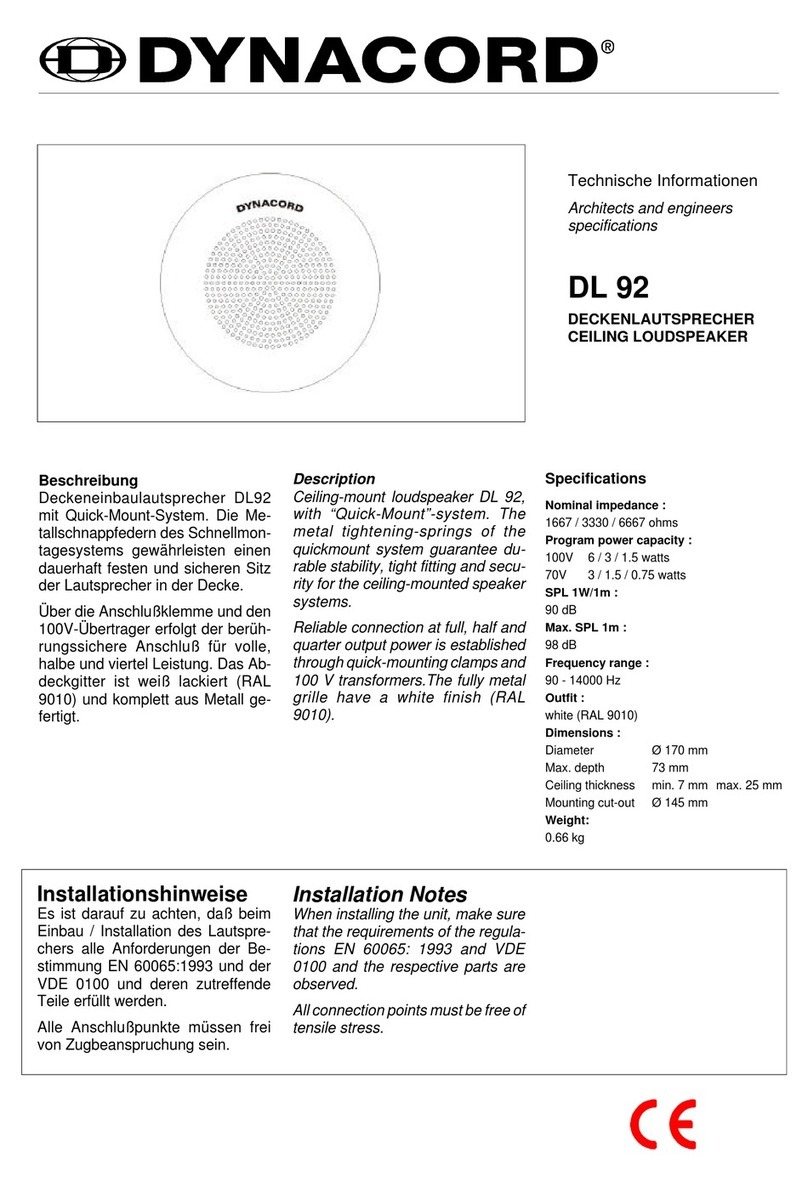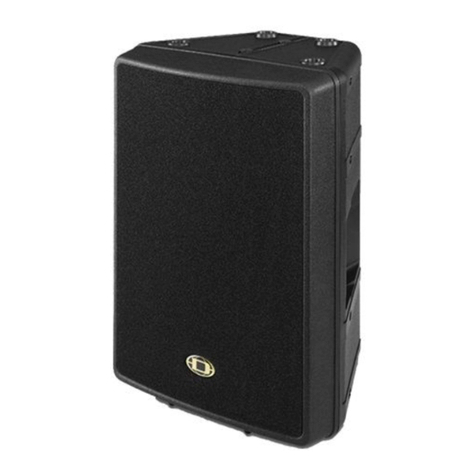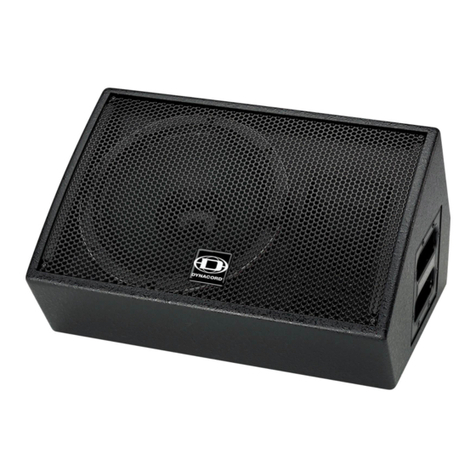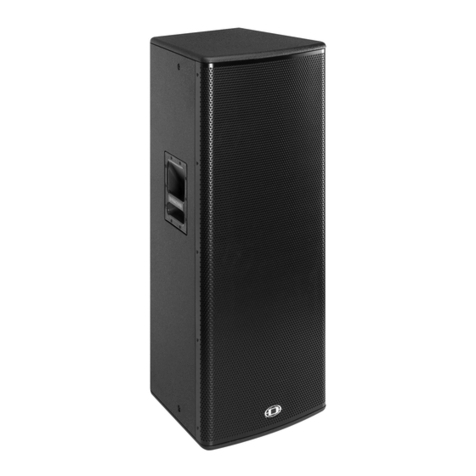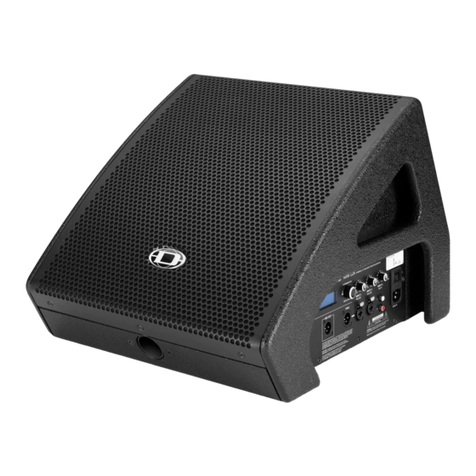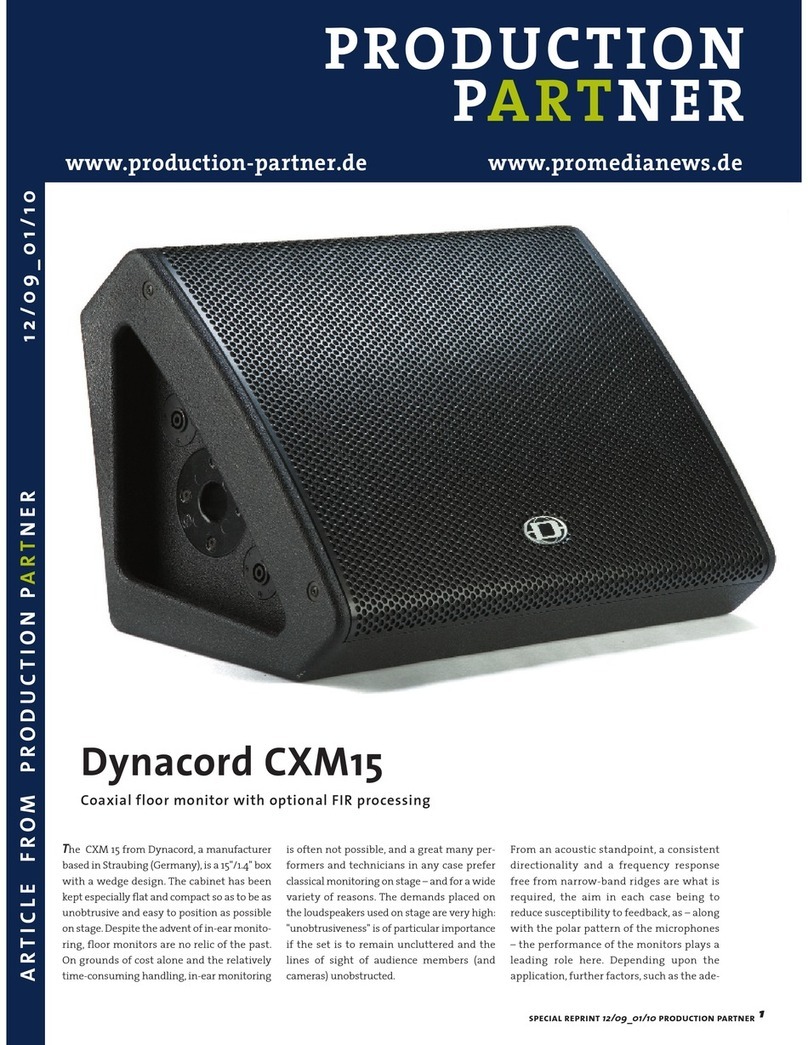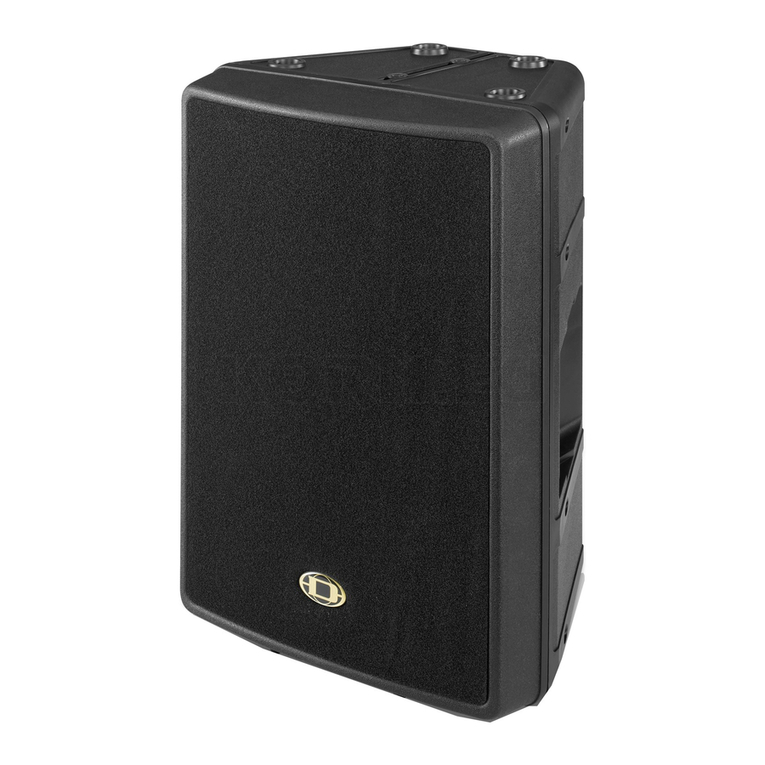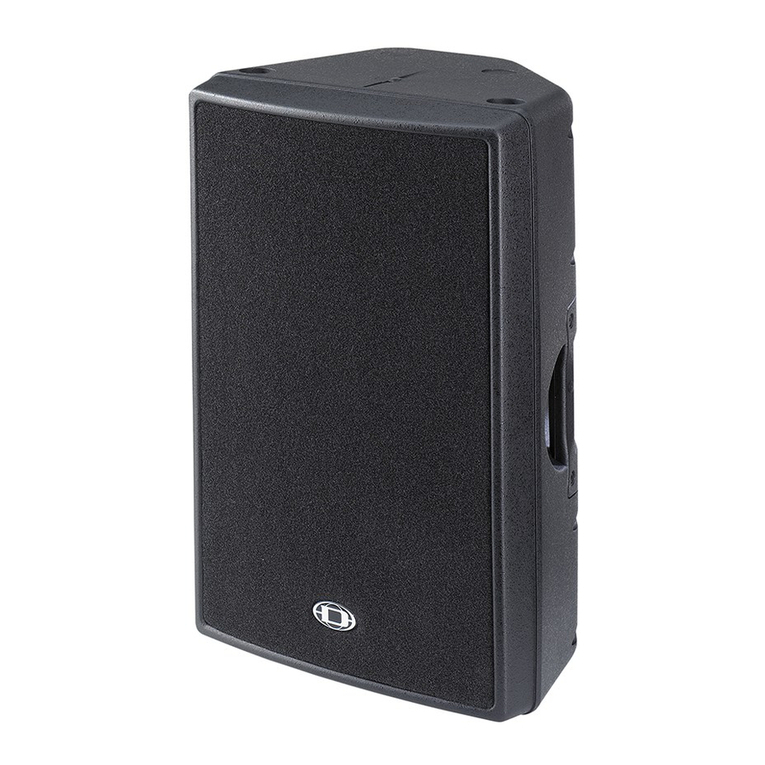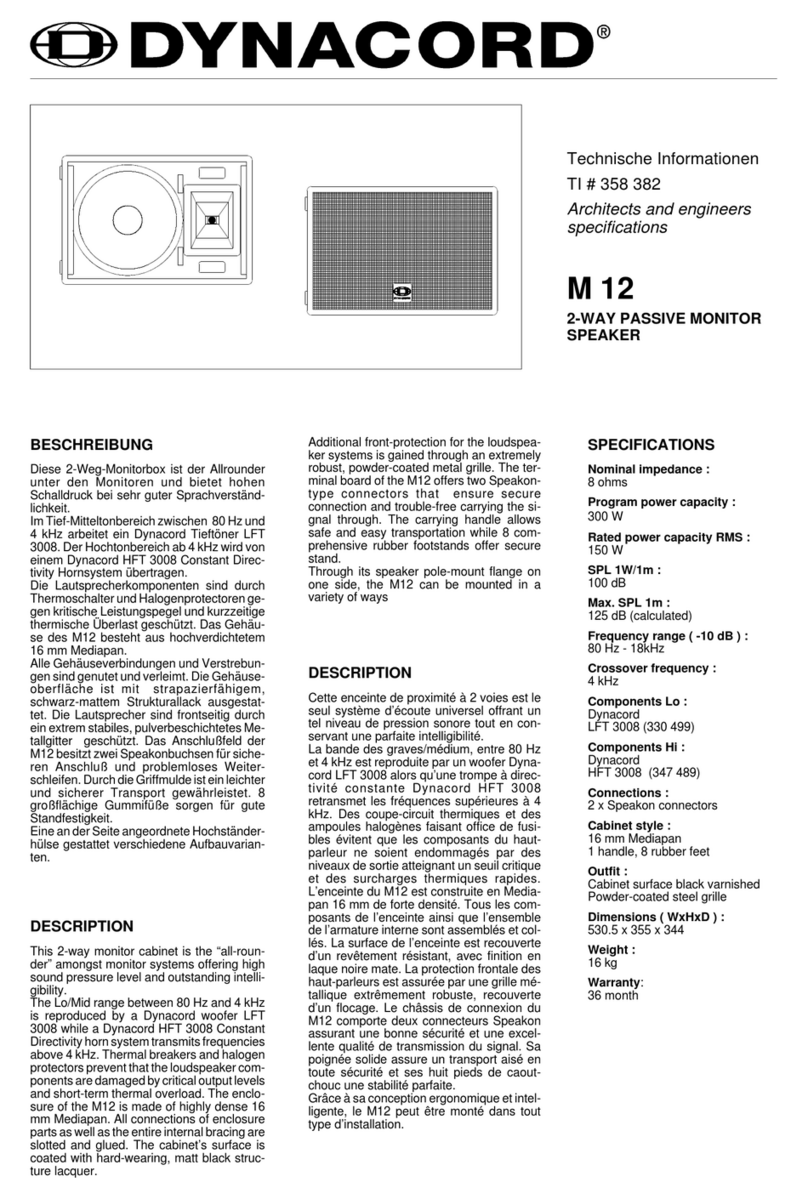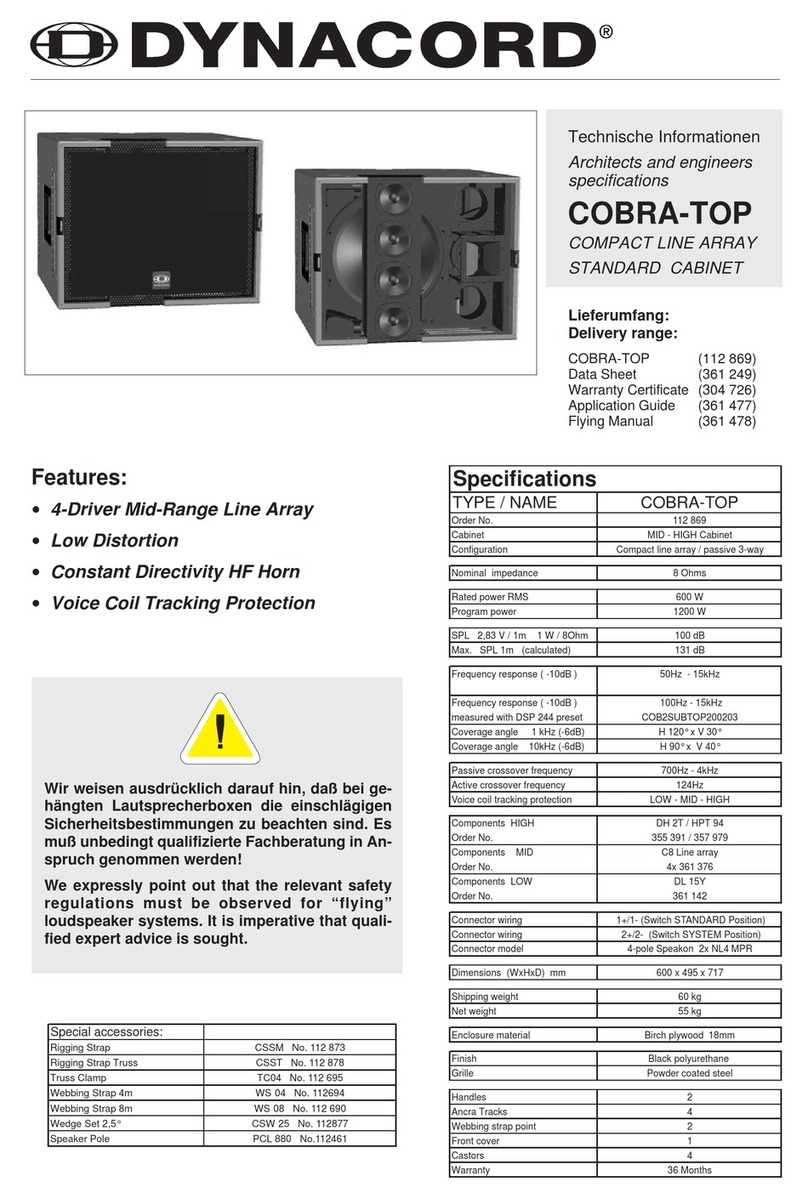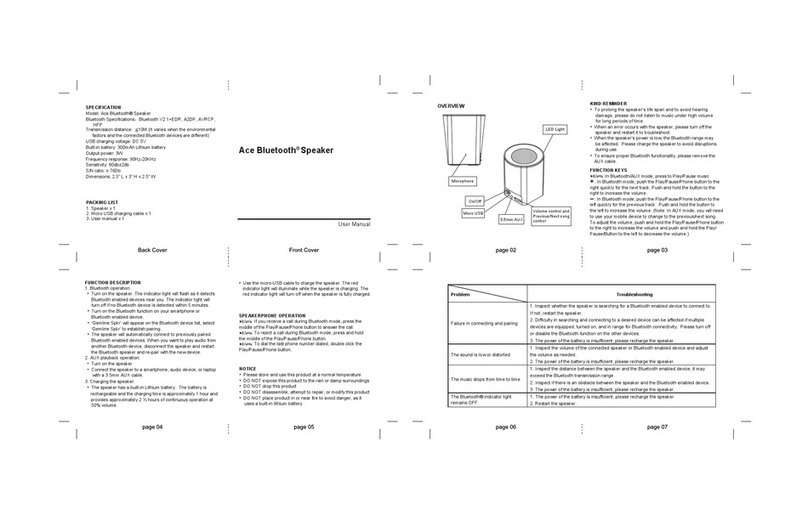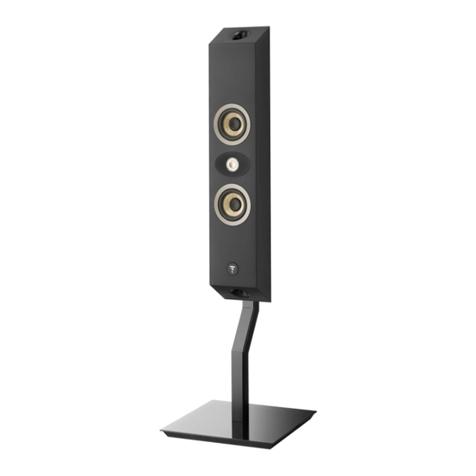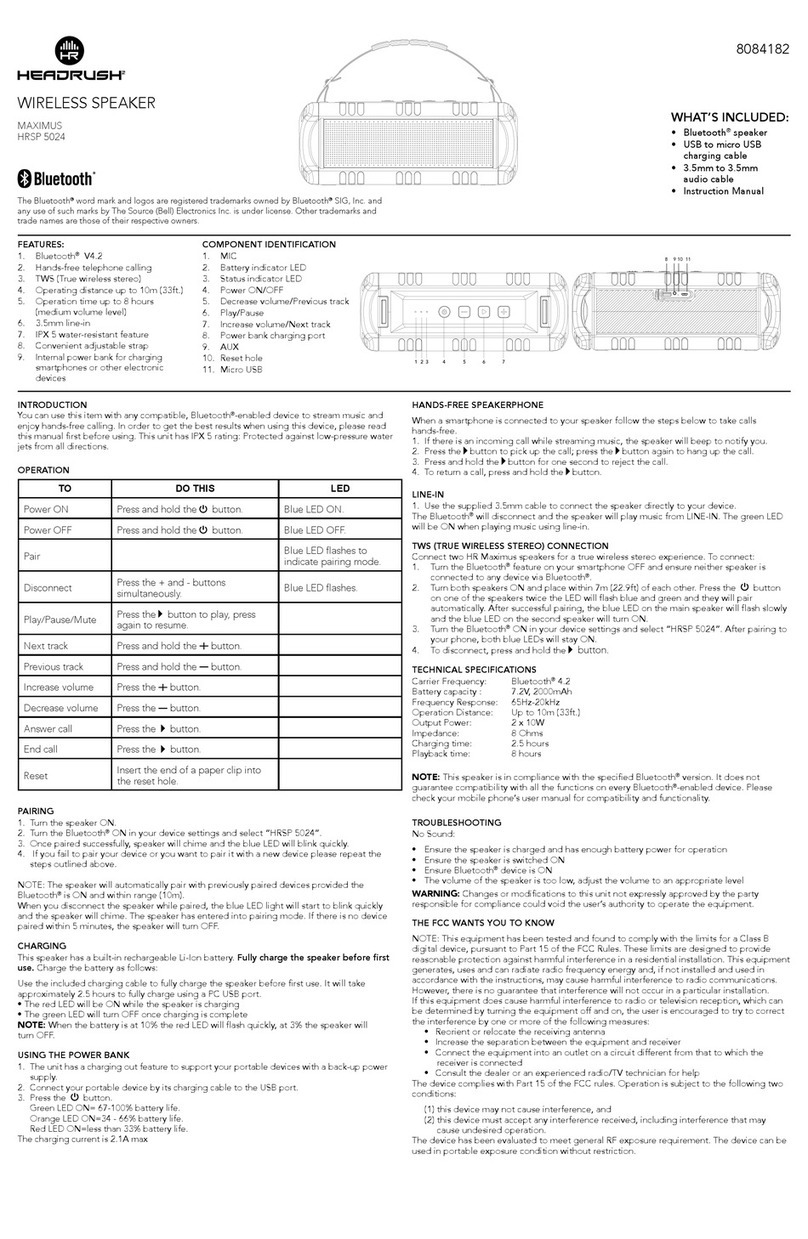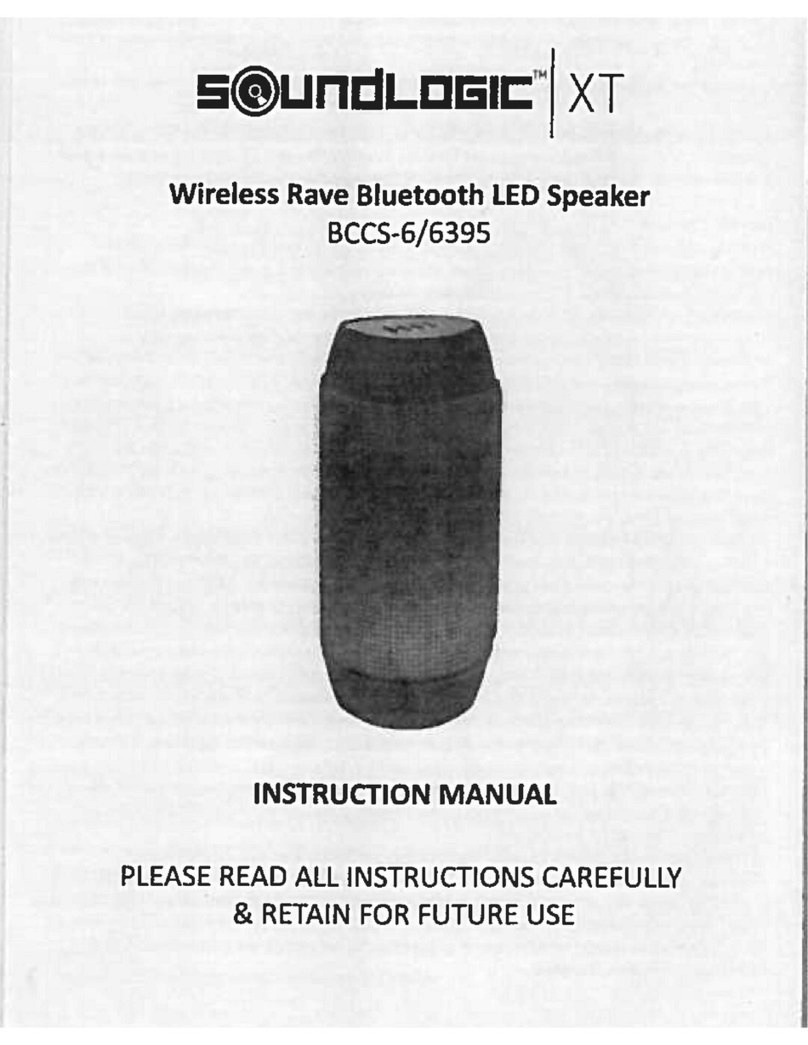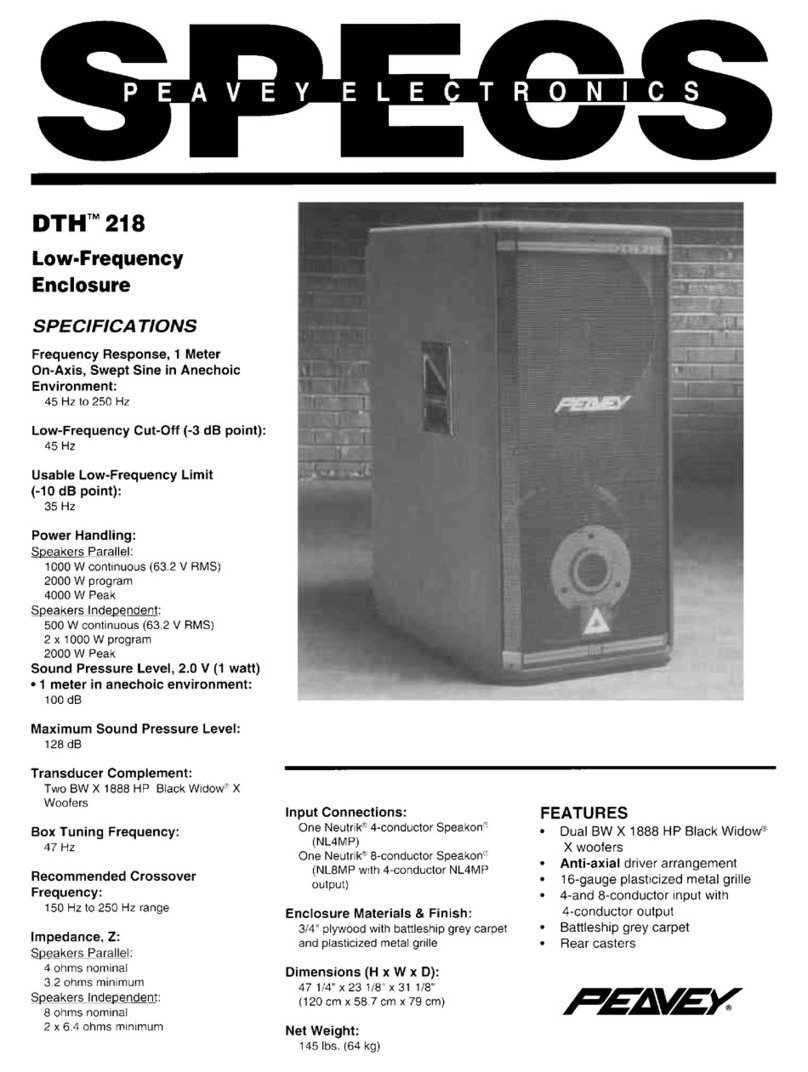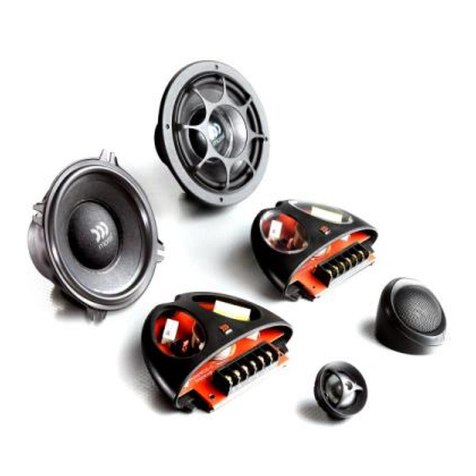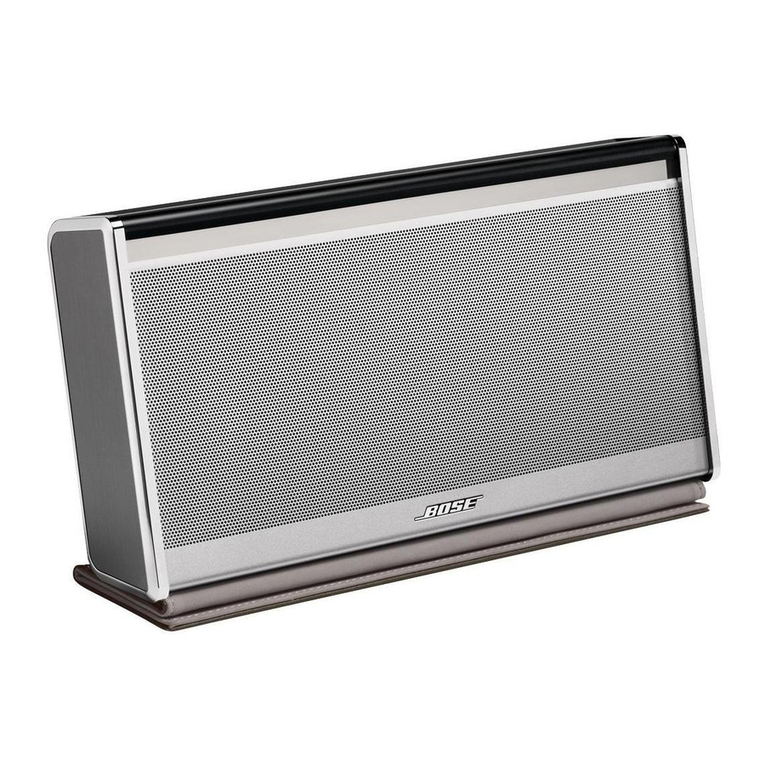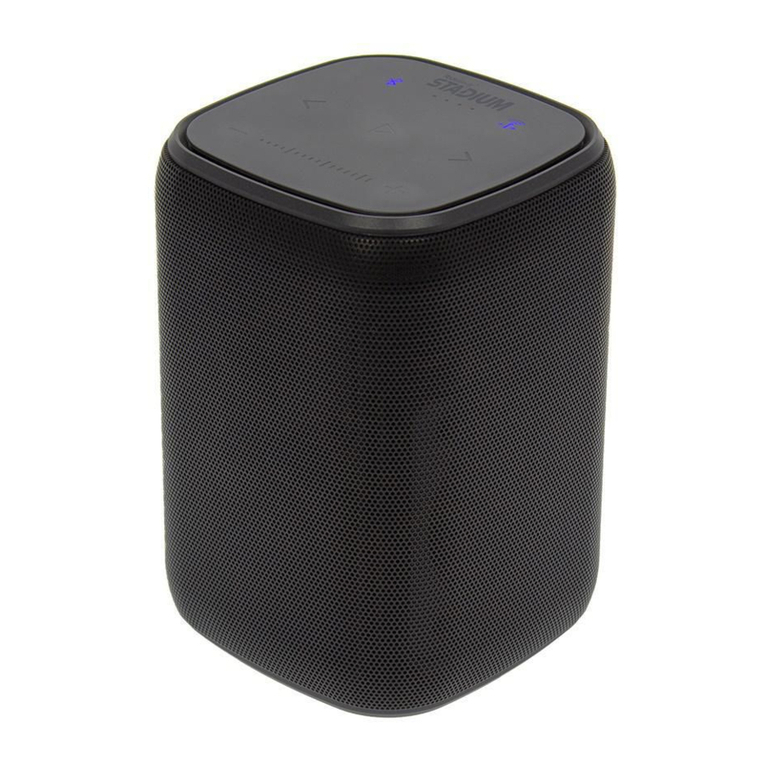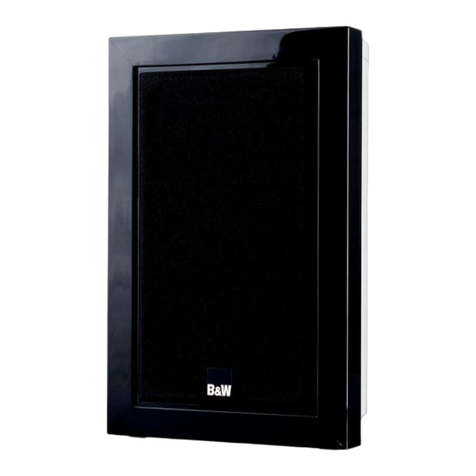A 112A | A 115A | A 118A
5
1 Introduction
The DYNACORD powered A-Line series includes three
models: a 12-inch, two-way full-range; a 15-inch, two-way
full-range; and a perfectly matching 18-inch subwoofer. All
three models feature solid 15-mm plywood enclosures that
combine durability with low weight. A high-quality black
paint finish and steel grille offer road-ready ruggedness
and a professional appearance. The full-range models are
equipped with a 12-inch EVS-12K woofer (A 112A), a 15-
inch EVS-15K (A 115A) and provide an 1.5” titanium dia-
phragm compression driver radiating into a 90 x 50-degree
(H x V) high-frequency waveguide. Both of the cabinets
provide an asymmetrical footprint with a 60-degree moni-
tor angle allowing for alternative use as a powered floor
monitor.
The onboard power modules of A 112A and A 115A com-
bine lightweight Class-D dual-channel power amplifiers
(biamping) with a total of 500 W dynamic peak power,
along with the digital signal processing for crossover (24
dB/octave slope), EQ and advanced digital speaker protec-
tion. The linearization of transfer function in both cabinets
is provided by state-of-the-art FIR filter technology.
The operating and connector panels are designed for intu-
itive operation and versatile connectivity. The 2-channel
mixer section offers a XLR/TRS combo connector Line 1,
stereo RCA sockets and a level control in the Input 1 chan-
nel, and a second XLR/TRS combo connector Line 2 which
is switchable for microphone or line sensitivity in channel
Input 2. For daisy-chaining to other devices, there is a XLR
link output available which can be set to provide either the
Line 1 or the mix signal.
In the Master section we find the overall Volume control,
along with a switch for selecting the dedicated EQ setting
for either Main or Monitor operation. A second switch ac-
tivates a high-pass filter when using the full-range cabinets
in combination with a powered subwoofer (A 118A).
The powered subwoofer A 118A features a similar power
module with 400 W peak power, Master Volume control, a
phase-inversion switch, a XLR/TRS combo input connec-
tor, and a XLR link output socket.
Setting up a small - yet very powerful - system turns out to
be a piece of cake when combining with DYNACORD CMS
mixing consoles (e.g. CMS 600-3). They are the perfect fit
and offer a broad range of advanced features in concert
sound quality.
1.1 Scope of Delivery, Unpacking and
Inspection
Carefully open the packaging and take out the cabinet. In-
spect the cabinet’s enclosure for damages that might have
occured during transportation. Each cabinet is examined
and tested in detail before leaving the manufacturing site
to ensure that it arrives in perfect condition.
Please inform the transport company immediately if the
cabinet shows any damage. Only the addressee can claim
damages in transit. Keep the cardboard box and all pack-
aging materials for inspection by the transport company.
Keeping the cardboard box including all packing materials
is recommended.
HINT: Only ship the cbinet in its original packaging.
Package the cabinet as ist was packaged by the manufac-
turer to guarantee optimum protection from transport
damage.
1.2 Warranty
Visit www.dynacord.com for warranty information.
1.3 HF-Interference
This equipment has been tested and found to comply with
the limits for a Class A digital device, pursuant to Part 15
of the FCC Rules. These limits are designed to provide rea-
sonable protection agains harmful interference in a resi-
dential installation. This equipment generates, uses, and
can radiate radio frequency energy and, if not installed and
used in accordance with the instructions, may cause harm-
ful interference to radio communications. However, there
is no guarantee that interference will not occur in a partic-
ular installation. If this equipment does cause harmful in-
terference to radio or televsion reception, which can be
determined by turning the equipment off and on, the user
can try one or more of the following measures to correct
the interference:
• 1 Powered Speaker or Powered Subwoofer
• 1 Owner`s Manual (this document)
•1MainsCord
• 1 Warranty Certificate including Safety Instructions
• Reorient or relocate the receiving antenna
• Increase the separation between the equipment and receiver
• Connect the equipment into an outlet on a different circuit than the
receiver
• Consult the dealer or an experienced radio/TV technician for help
